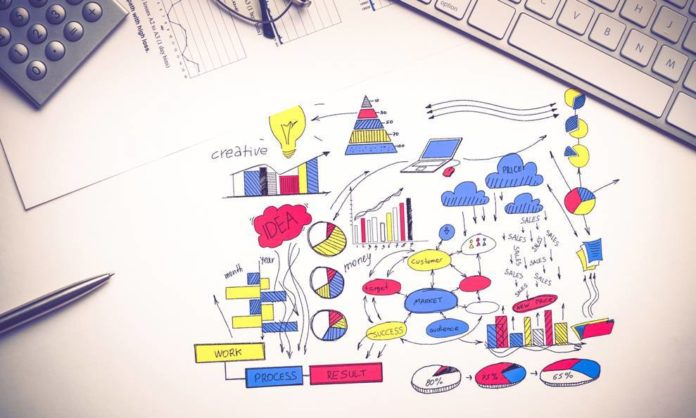The bottom line for any business is profit, the money you get to call your own after you have paid for everything else. You could have a revenue in the hundreds of thousands, but if your expenditure is also in the same region, your profits will be negligible. It means that your financial planning must be geared towards making a profit rather than just increasing revenue. You may not realize it, but you have a very powerful tool at your disposal that will enable you to increase your profits. Your accounts are full of valuable data just waiting to be harvested, so if you’re not making full use of them now’s the time to have a look at what your figures are telling you.
Making good use of your figures
Keeping accurate records of all the financial aspects of your business is something you must do, so you can make tax returns, operate your payroll and monitor your profits. For many small businesses that’s where the exercise begins and ends, a chore that must be completed rather than an opportunity to extract information that could transform your operation. If you are guilty of this, you’re not alone. Many business owners are missing a trick by not using their figures to improve their finances, so if you learn how you can achieve this, you’ll be a step ahead of many of your competitors. At its most basic level, your accounts will show how much money the business took for a given period, and how much was spent for the same period. Comparing the two gives you your profit figure. There is, however, far more information contained in your figures than you might realize.
What your data is telling you about your profits
Let’s assume you are a retailer, selling stationery products. Your figures look healthy enough, and you are making a return of around 50%, so for every hundred dollars that your business takes, you get to keep fifty. By analyzing your data, you can find out what lines are your bestsellers, so, for example, you may have a budget A4 notepad that retails for two dollars. You sell 100 of these a week, and they cost you 50 cents to buy, so your profit on these pads is $150. Because you know you sell a lot of them, you make sure stock is frequently replenished, and you promote the notepads in your marketing. Now have a look at some of your other products. Say you have a deluxe leather-bound A4 notebook which retails at twenty dollars. You only sell twenty of these a week, which is far less than your budget pads, so you don’t include them in your promotions and don’t worry too much if you run out. What you’re missing is that the deluxe notebook costs you eight dollars to buy, so if you sell twenty a week at twenty dollars, your profit is $240. That’s forty dollars more than the item you keep well stocked and promoted. If you apply this very basic calculation to all your products, you will soon have a much better picture of which lines are making you the most money. You can then refocus your efforts on these more profitable products, resulting in a significant increase in profitability.
What your data is telling you about your expenditure
You can perform a similar exercise on your outgoings, by categorizing them according to type and seeing where you are spending more than you need to. If you are a builder, one of your major expenses is likely to be your machinery. Have a look at all the expenditure in this area, and you are likely to spot some avoidable losses. For example, in June you lost a back-hoe loader for two weeks when it broke down. Understandably, this sets your build back and caused you to lose another job, resulting in a reduced income plus the expense of having the loader repaired. In December a radiator blew in your excavator because no-one had kept the anti-freeze topped up and the temperatures fell to minus five. Again, costly repairs and a loss of revenue. If you calculate how much you spent on repairs, and then add how much you lost because you couldn’t complete your jobs, you could easily be looking at thousands of dollars – maybe tens of thousands. This demonstrates how costly breakdowns can be, so if you find a way of avoiding these problems by using, for example, preventative maintenance software, you will reduce the outlay and ensure you don’t lose work.
What your data is telling you about your pricing
Pricing your products or services is something of an art form, and the approach you use will depend on your market, your competition and the state of the economy. You will only succeed in having higher prices if you offer something extra to consumers, or you are the only source for this product or in your location. Equally, you might be afraid of putting your prices up because you believe your customers will desert you for the opposition. Use your figures to guide you in this. If you are selling twenty thousand pencils a year at a dollar each, that’s a healthy sounding $20,000 a year. However, because they cost 90 cents each to buy, your profit is a less than impressive $2,000, and that’s before you take out your overheads. If you increased the price by twenty cents, you would treble your gross profits and make $6,000. You can analyze all your pricing in the same way, adjusting items up by small amounts that will make a big difference to your profits but won’t affect your customers to any great degree.
These examples are only the tip of the iceberg, and there are many ways in which to use your figures to adjust your pricing, products, margins, and expenditure. If you find dealing with numbers hard going, make use of some the new software services that take the hard work out of the analysis and can give you reports on every aspect of your finances. It’s well worth the time involved, so exploit the data you are producing and start making more money.
















